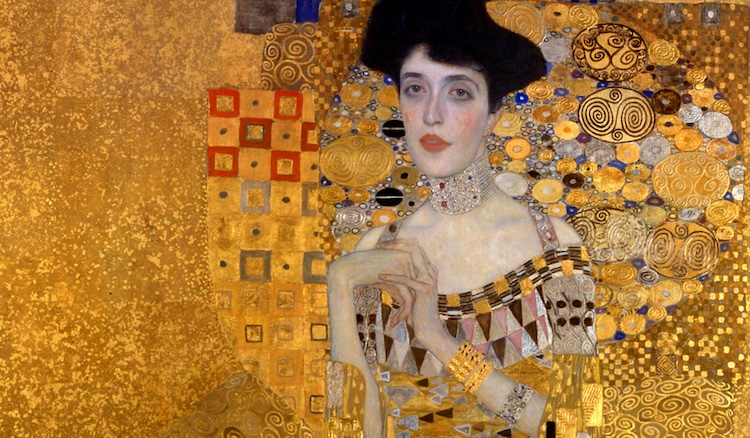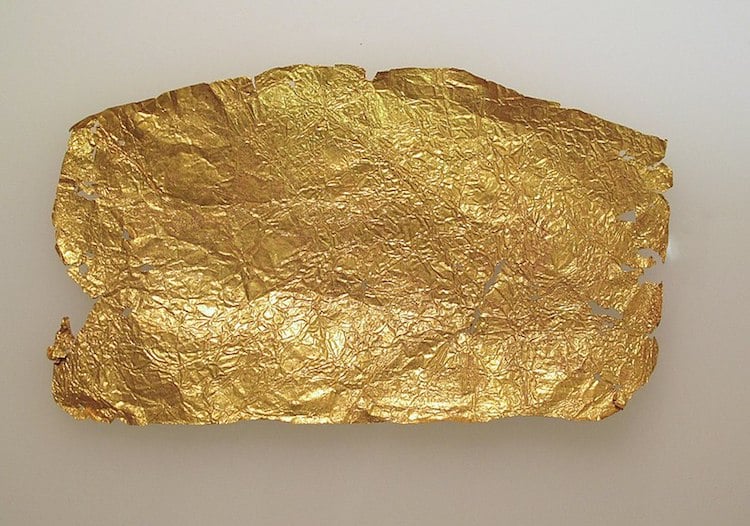
Detail of ‘Adele Bloch-Bauer I’ (1907) by Gustav Klimt
This post may contain affiliate links. If you make a purchase, My Modern Met may earn an affiliate commission. Please read our disclosure for more info.
For centuries, artists and artisans have turned to gold leaf as a way to make their creations shimmer and shine. Evident in everything from ancient artifacts to modern masterpieces, the glistening gold accents can add an ethereal touch to any work of art.
Today, many contemporary creatives continue to use gold leaf in their work. In addition to offering a less expensive and more versatile alternative to solid gold, gold leaf is celebrated for its ability to accentuate color and form through luminous details. Here, we take a closer look at the dazzling material, explaining how to use gold leaf in a painting and exploring its eye-catching history.
What is gold leaf?
Gold leaf is gold that has been hammered into fine sheets. The process of pounding solid gold into a thin leaf is called goldbeating, and the act of using gold leaf to adorn a surface is called gilding.

Photo: Met Museum via Wikimedia Commons
How to Use Gold Leaf in a Painting
If you have no experience gilding, using gold leaf in your own practice may seem intimidating. However, with just a few simple steps, you can transform a completed painting into a transcendent masterpiece.
1. Gather your materials.
You’ll need gold leaf sheets, paintbrushes, a metal leaf adhesive, a gilding brush, and your painting, of course!
2. Prepare your surface.
Use a regular paintbrush to apply the adhesive to your painting. You only need to brush it onto the sections you will cover in gold leaf.
3. Add the gold leaf.
Once the adhesive is tacky, you can apply the gold leaf. You want to handle the material as little as possible, so using tweezers or another application tool is recommended.
4. Use the gilding brush to buff the gold leaf.
This will remove the excess gold from your design. Be sure to save the remnants for your next painting!
Next: The History of Gold Leaf in Art
